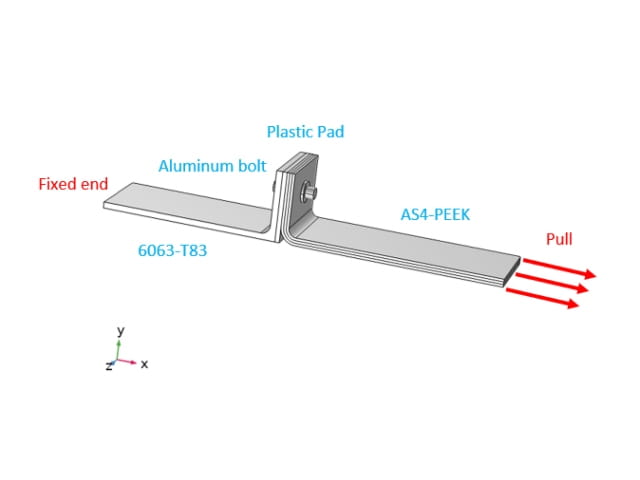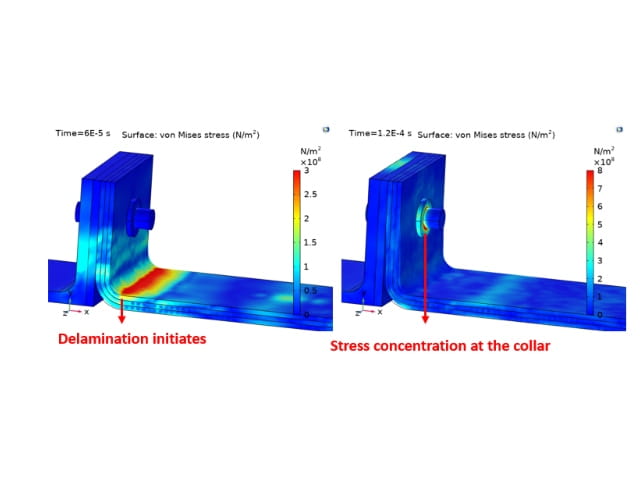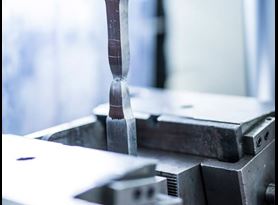Using Finite Element Analysis (FEA) to Identify Delamination of Composites Materials
Delamination is an important factor to consider when testing composites, particularly when comparing this to metallic materials.
The delamination of composite materials can be caused by high interlaminar stresses in conjunction with low through-thickness strength which puts composite materials at greater risk of failure.
Types of delamination
Delamination is a common failure that leads to the separation of the layers or the reinforcement within the composite material. Delamination failure can be caused by a fracture in the adhesive, resin, or within the reinforcement, or it can be caused by debonding of the resin from the reinforcement.
The example below uses advanced Finite Element Analysis (FEA) to look at delamination of a bolted joint due to an overload during operation.
How to prevent delamination in composite materials
Using the FEA method, we can simulate the delamination of the structural component. In the example below we look at the structural evaluation of a multi-layered composite flange (AS4-PEEK) under dynamic loading.
The diagram illustrates the dynamic assessment of a composite flange connected to an aluminum grade, heat-treated part (Al063-T83), which is separated by a plastic spacer and kept in place using aluminum bolts.

The composite flange has a steep radius which is a critical location for delamination initiation as the laminate has reduced capacity for out-of-plane loading.
Using FEA analysis, we can simulate, and confirm the concern over the delamination initiation in the loading phase at a small flange opening angle, as well as stress concentration in the collar.

We can use this to study and simulate, design improvements such as increasing the composite thickness, using a crushable bolt collar that absorbs energy through its deformation, or testing a different flange architecture. Using traditional FEA of composite materials and parts, it enables us to:
- Predict critical failure events such as delamination and debonding at the locations of interest.
- Size the flange parts to optimize the design by increasing loading capacity, reducing weight, and therefore cost.
- Create a digital replica, or digital twin of the dynamic test and use that to reduce qualification costs.
The Element advantage
At Element, our digital engineering and composites testing experts work in partnership and assist clients from verification to validation, throughout the entire product life-cycle, to ensure materials, products and components are at the forefront of innovation, and perform as expected. Contact our team today to learn more.
Find related Resources
Related Services

Polymers Testing
Element performs a range of mechanical, electrical, flammability tests and utilizes thermal analysis tests to characterize the composition of polymers and composite materials.

Finite Element Analysis Services (FEA)
Element offers advanced numerical analysis service using Finite Element Analysis (FEA) techniques using industry standard software to predict the long term behavior of materials components and products when in service.

Materials Testing
Find out more about Element's comprehensive ranges of materials testing services available in the TIC sector, covering materials selection, application and performance testing as well as failure analysis testing services.

Modeling and Simulation
We specialize in modeling and simulation to accelerate your research and development initiatives, optimize your designs and support safe, efficient operations.

